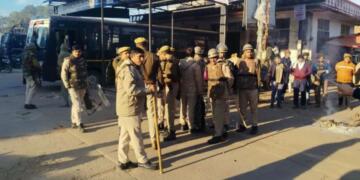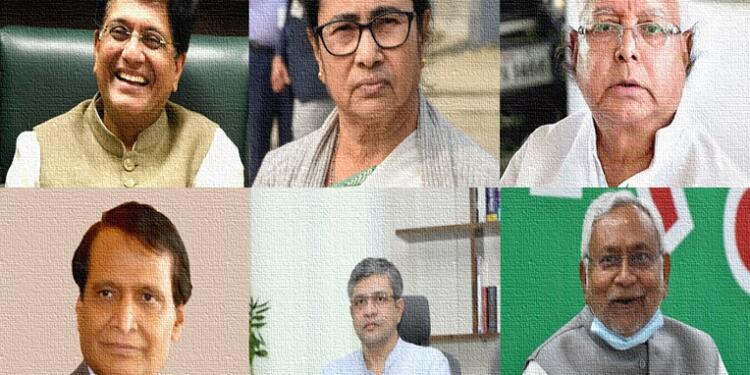The performance of a Railway Minister in India is often evaluated based on initiatives related to railway development and modernization taken during their tenure. However, an essential aspect that often doesn’t receive as much attention is the safety of passengers, which can be assessed by examining the number of train accidents leading to casualties and injuries.
In this article, we look at the tenure of each Railway Minister from 1998 to 2023, evaluating their terms using two key parameters – Casualties per Day (CPD) and Injuries per Day (IPD). These metrics provide an interesting perspective into the safety record during their terms in office.
Nitish Kumar (Janata Dal (United)):
Notable Accidents: Gaisal train disaster [1999], Rafiganj train disaster [2002]
Nitish Kumar served two terms as Railway Minister. His first term, which spanned from March 1998 to August 1999, saw multiple significant train accidents leading to a CPD of approximately 1.167 and an IPD of around 1.274. His second term from 2001 to 2004 saw a decrease in both CPD and IPD to approximately 0.095 and 0.111, respectively. The combined CPD and IPD for his two tenures stand at approximately 0.438 and 0.484, respectively.
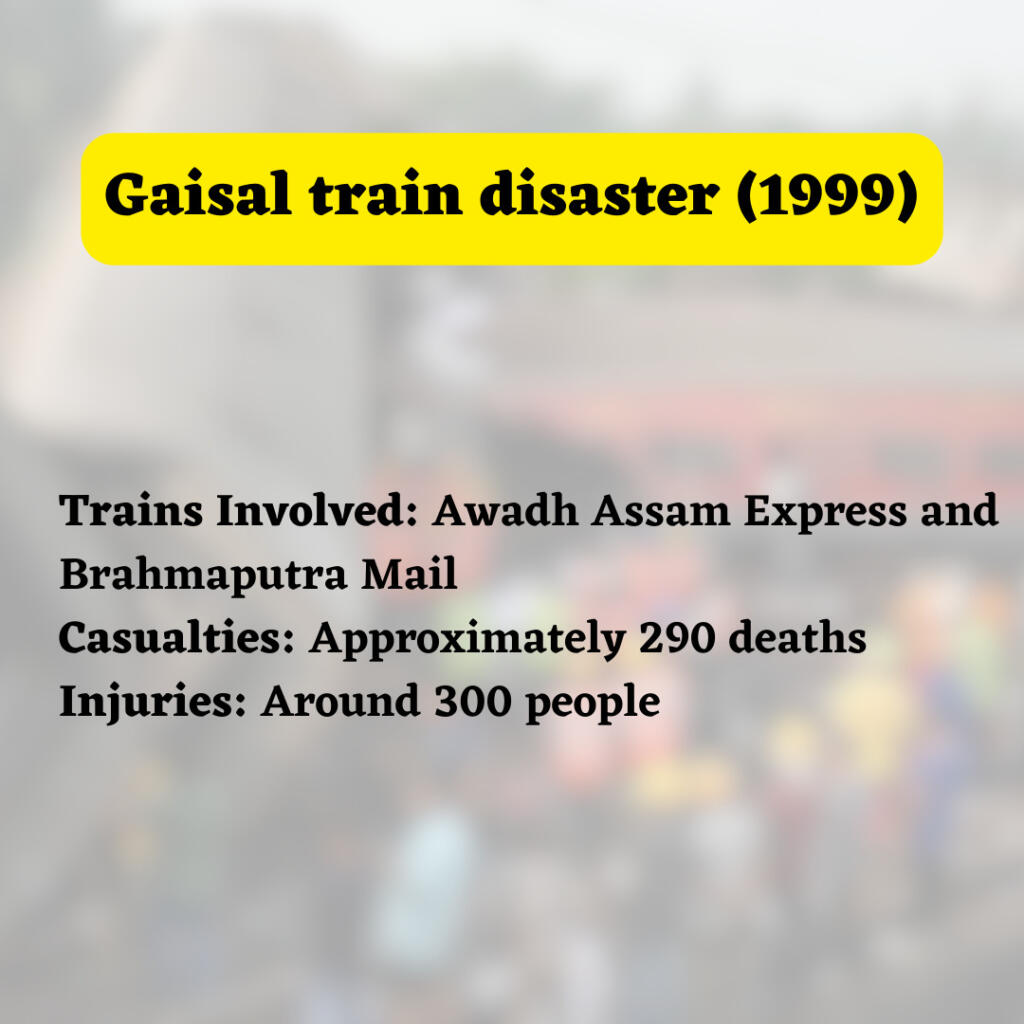
Mamata Banerjee (All India Trinamool Congress):
Notable Accidents: Ambala Train Collision [2000], Jhargram Train Derailment [2010]
Mamata Banerjee also served two terms as Railway Minister. Her first term was relatively short, lasting only 153 days. During this time, a significant accident occurred leading to a CPD of approximately 0.294 and an IPD of around 0.980. Banerjee’s second term from 2009 to 2011 saw an increase in CPD and IPD, likely due to a couple of high-casualty accidents. The combined CPD and IPD for her two tenures were approximately 0.301 and 0.739, respectively. However, it is important to note that given the relatively shorter tenures, these figures might not represent a complete picture of her performance.
Lalu Prasad Yadav (Rashtriya Janata Dal):
Notable Accidents: Jaunpur Train Crash [2005]
During Yadav’s tenure from 2004 to 2009, he had a CPD of approximately 0.061 and an IPD of about 0.177, one of the lower rates among the ministers analysed, despite multiple accidents.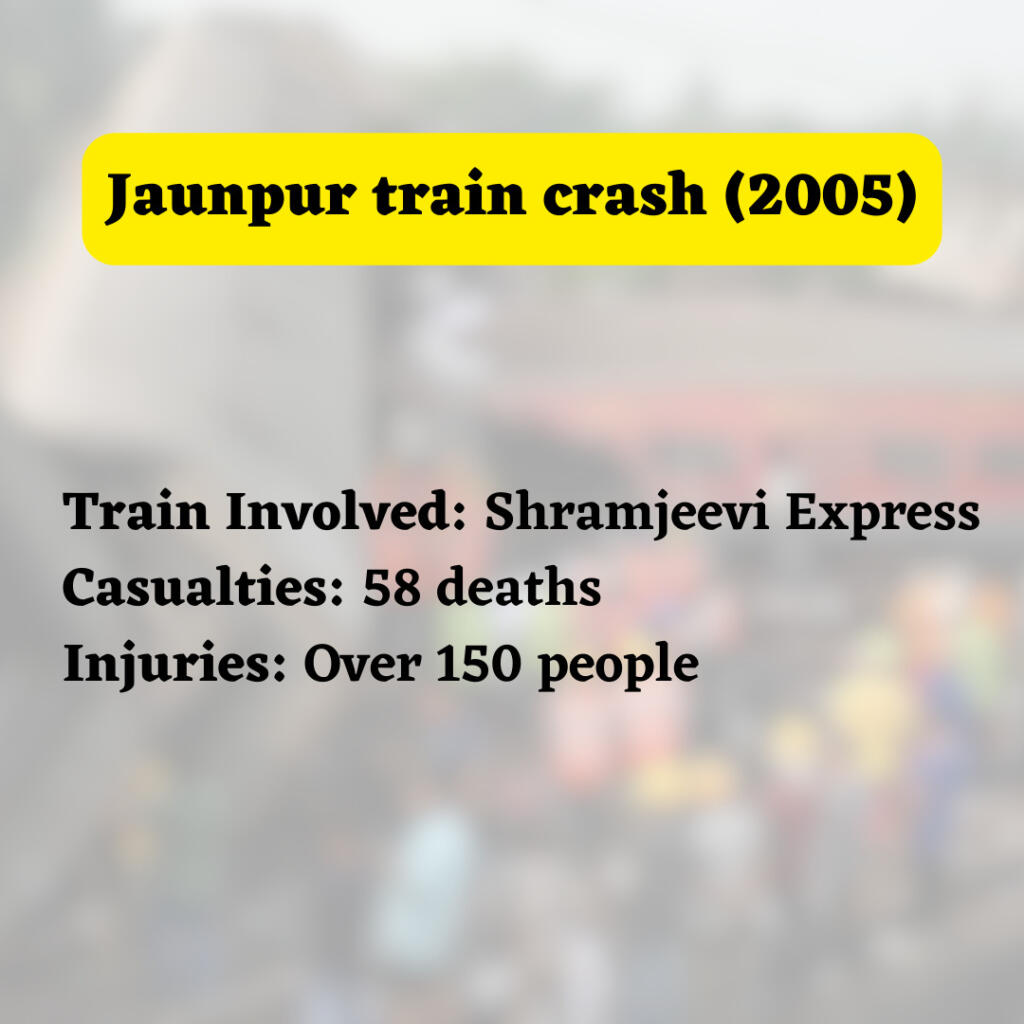
Dinesh Trivedi, Mukul Roy, Pawan Kumar Bansal, Mallikarjun Kharge, DV Sadananda Gowda:
Notable Accidents: Tamil Nadu Express Catching Fire [2012]
These ministers served relatively short tenures, all less than a year. Their CPD and IPD numbers varied from zero (in the case of Pawan Kumar Bansal, who had no major accidents during his term) to as high as 0.188 and 0.795 in the case of Mukul Roy. Again, due to their short tenures, these figures may not provide a complete representation of their performance.
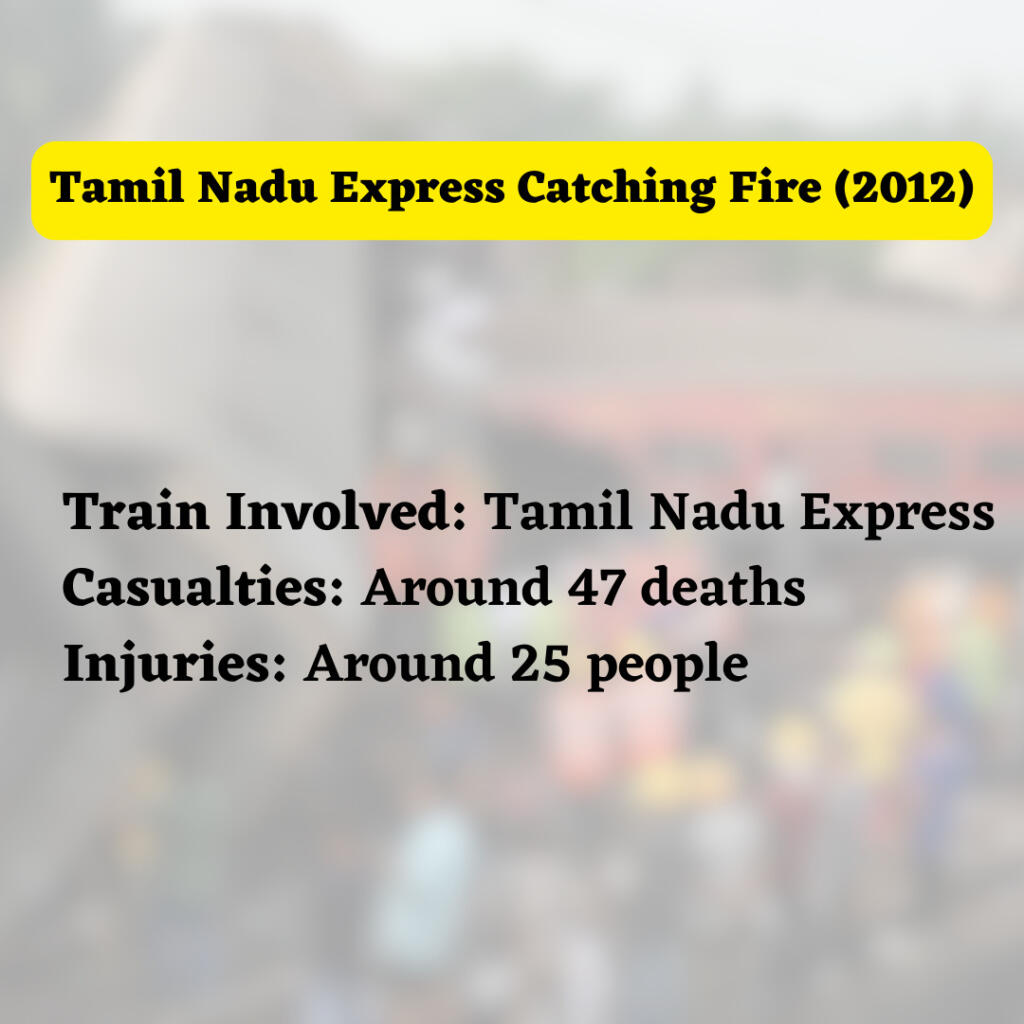
Suresh Prabhu (Bharatiya Janata Party):
Notable Accidents: Rae Bareli Derailment [2015], Pukhrayan Derailment [2016]
During his tenure of almost three years, the CPD and IPD were approximately 0.285 and 0.520, respectively, due to several significant accidents.
Piyush Goyal (Bharatiya Janata Party):
Notable Accidents: Amritsar Train Disaster [2018]
Serving from 2017 to 2021, Piyush Goyal’s tenure saw a lower CPD and IPD, approximately 0.050 and 0.076, respectively.
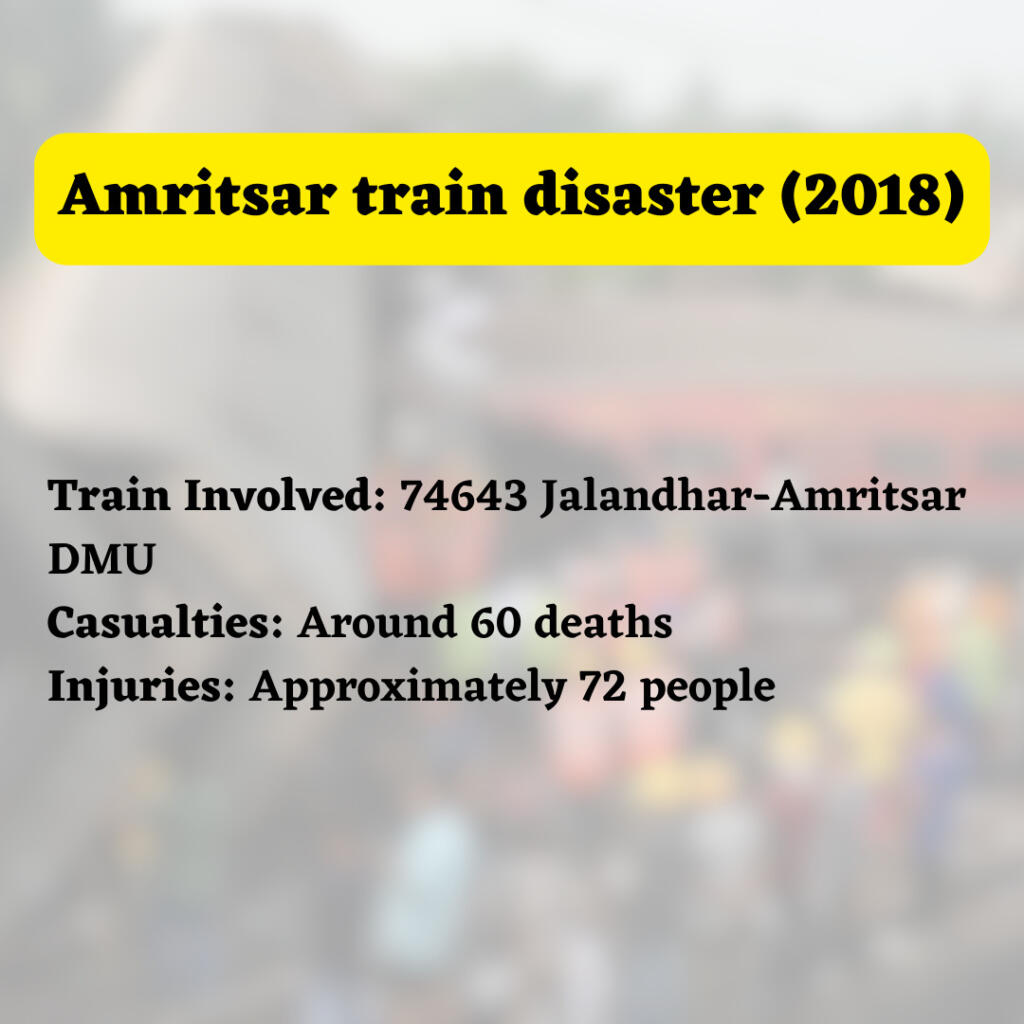
Ashwini Vaishnaw (Bharatiya Janata Party):
Notable Accidents: Balasore train collision [2023]
Ashwini Vaishnaw, the incumbent minister at the time of writing, has an ongoing tenure of almost two years. The unfortunate Odisha train collision significantly affected his CPD and IPD, which stood at approximately 0.429 and 1.600, respectively.
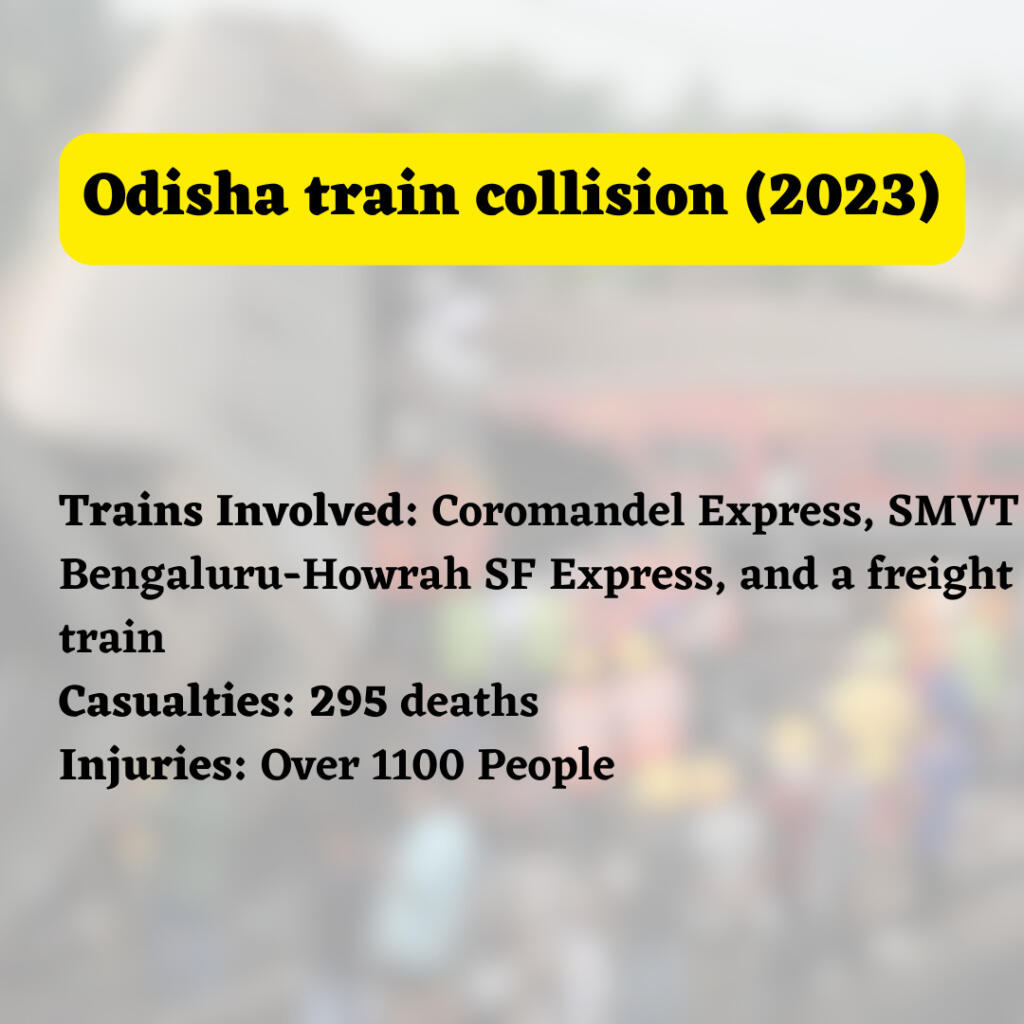
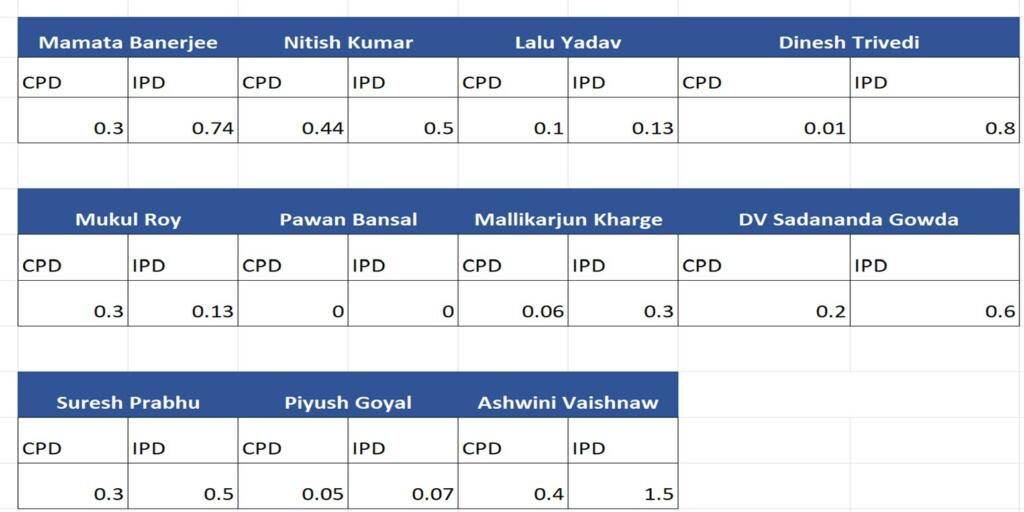 While these numbers provide a perspective into the safety measures during the tenure of various Railway Ministers, it is important to note that the sole responsibility does not lie with the ministers. The safety of Indian Railways is a collective responsibility, requiring the effort of the entire railway administration, government policies, technological advancements, infrastructure, and maintenance staff. Additionally, the CPD and IPD of ministers with less than 365 days in office should not be taken as the absolute truth due to the short observation period.
While these numbers provide a perspective into the safety measures during the tenure of various Railway Ministers, it is important to note that the sole responsibility does not lie with the ministers. The safety of Indian Railways is a collective responsibility, requiring the effort of the entire railway administration, government policies, technological advancements, infrastructure, and maintenance staff. Additionally, the CPD and IPD of ministers with less than 365 days in office should not be taken as the absolute truth due to the short observation period.
Also, these figures do not consider factors such as the total number of passengers traveled, number of trains operated, or other external factors such as natural disasters, sabotage, etc., that could affect the safety record. Thus, while these figures give an indication of safety during different tenures, a more detailed and nuanced analysis would be required for a comprehensive understanding of railway safety under various ministers.
Had it not been for the Balasore collision, Ashwini Vaishnaw had almost achieved the near perfect record of Piyush Goyal, who had a drastically low rate of accidents and casualties during his tenure. On a comprehensive analysis, it must be noted that while Balasore collision is both a major setback for Ashwini Vaishnaw, as well as Indian govt., judging him solely on the basis of one collision would be unfair. Interestingly, those hailing Nitish Kumar as an example of virtue conveniently avoid the fact that his tenure, especially the first one, witnessed more fatalities than the entire NDA II compiled.
Support TFI:
Support us to strengthen the ‘Right’ ideology of cultural nationalism by purchasing the best quality garments from TFI-STORE.COM



